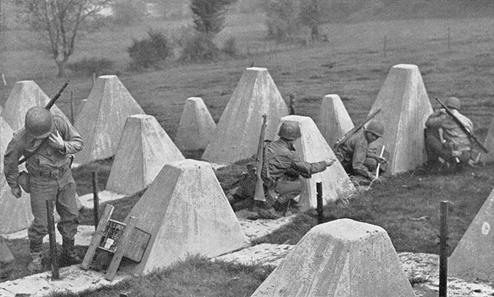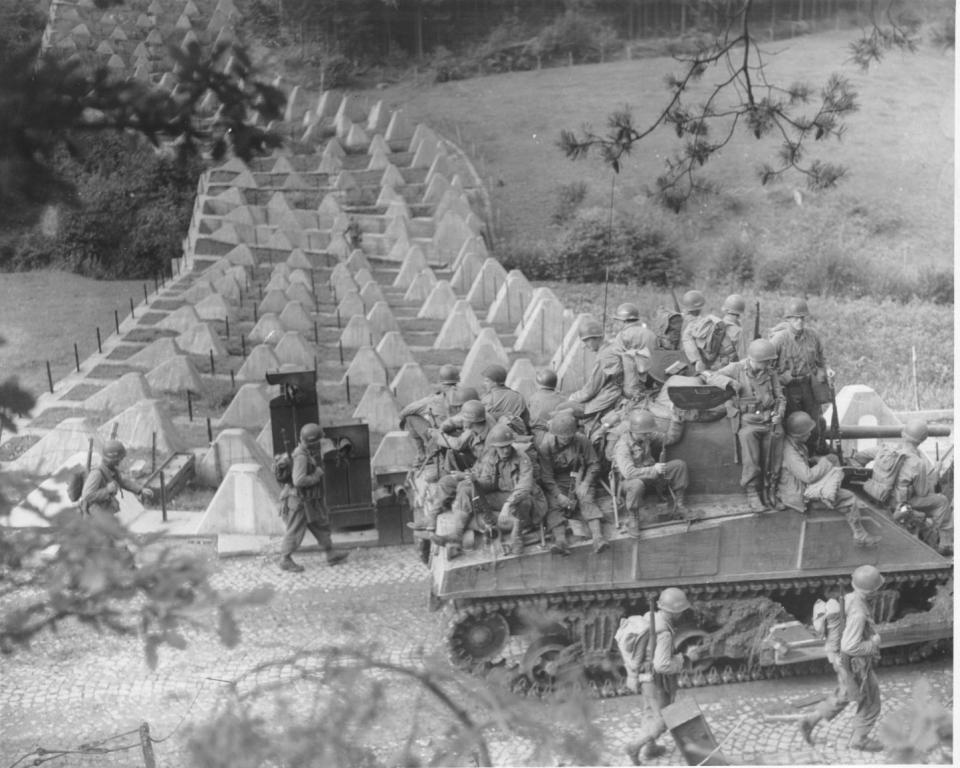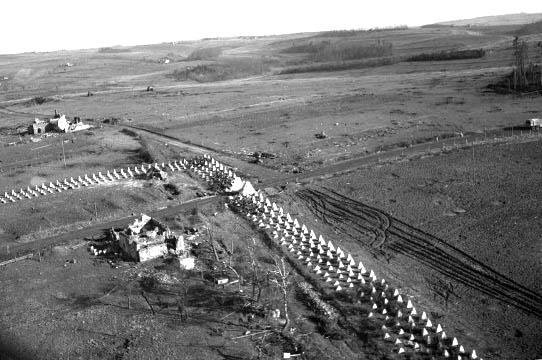-
Contributing Member


 13-295 Garand Picture of the Day - Siegfried Line Sept 1944
13-295 Garand Picture of the Day - Siegfried Line Sept 1944
Last edited by Mark in Rochester; 10-23-2013 at 12:42 PM.
He is no fool who gives what he cannot keep to gain that which he cannot lose
There are no great men, only great challenges that ordinary men are forced by circumstances to meet.
-
The Following 15 Members Say Thank You to Mark in Rochester For This Useful Post:
30-06_mike,
A. F Medic,
AZPhil,
Badger,
bearrowland,
Bill Hollinger,
Bill Hughes,
Bob Seijas,
Bob Womack,
frankderrico,
HOOKED ON HISTORY,
Mike Haas,
sjc,
spentprimer,
xa-coupe
-
10-23-2013 12:29 PM
# ADS
Friends and Sponsors

-
Contributing Member


He is no fool who gives what he cannot keep to gain that which he cannot lose
There are no great men, only great challenges that ordinary men are forced by circumstances to meet.
-
The Following 6 Members Say Thank You to Mark in Rochester For This Useful Post:
-
FREE MEMBER
NO Posting or PM's Allowed

The DFCs would have been for the aerial spotters in the Cubs and Champs. Flew low, and slow, and in spitting range of the enemy. They called them "Grasshoppers."
Jerry Liles
-
Advisory Panel


Did those dragon's teeth ever stop a WWII tank? I only see pictures of tanks driving through lanes in them.
Real men measure once and cut.
-
-
Moderator
(M1 Garand/M14/M1A Rifles)


What was it that Generals Rommel and Patton said? "Static defenses are useless."
Bob
"It is said, 'Go not to the elves for counsel for they will say both no and yes.' "
Frodo Baggins to Gildor Inglorion, The Fellowship of the Ring
-
-
FREE MEMBER
NO Posting or PM's Allowed

Maybe so, but from my readings, a lot of GI's lost their lives assualting some of those static defenses. In the overall scope of war they might be "useless". But they sure slowed us down some.
-
Moderator
(M1 Garand/M14/M1A Rifles)


It was a strategic assessment, based upon seeing the potential of armored cavalry followed by watching the Maginot Line being pierced like paper.
Bob
"It is said, 'Go not to the elves for counsel for they will say both no and yes.' "
Frodo Baggins to Gildor Inglorion, The Fellowship of the Ring
-
-
FREE MEMBER
NO Posting or PM's Allowed

 Likely - But...
Likely - But...

Originally Posted by
13Echo

The DFCs would have been for the aerial spotters in the Cubs and Champs. Flew low, and slow, and in spitting range of the enemy. They called them "Grasshoppers."
Jerry Liles
The Taylorcraft L2-B was used in the Euopean Theater more than the champ.
-
FREE MEMBER
NO Posting or PM's Allowed

In order to avoid the dragons teeth a minefield probably had to be dealt with. Or possibly a great field of fire from a Tiger or Panzer. Danger was everywhere.
-
Legacy Member

Yea, such impediments were often meant as something to force the enemy into other avenues of approach that were mined or plotted in by artillery or mortar crews. Just like a mine field might be used to stop someone in their tracks for a few moments in order to rake the stalled troops with machineguns. Actually, I'd think that calling in an artillery or mortar strike on a specific area of such dragons teeth would be the best thing as it would open up an avenue right through it. Its called breech by fire. Mine fields could also be dealt with in a hurry by machinegun fire raking over an area or avenue of approach. Then the first tank, infantryman, or vehicle that made it through (pucker time there) would be followed by the next and the next in line Very quickly and I mean quickly. The last thing I've been taught to do is to slowly pick your way through a minefield while every one waits behind watching. That's when the artillery, mortars, anti tank and machinegun fire can be expected. Later, after the battlefield is taken and held. the Engineers can deal with removing anything and widening and creating avenues of approach.
-
The Following 2 Members Say Thank You to Fred G. For This Useful Post:
 Information
Information
















 PM
PM











